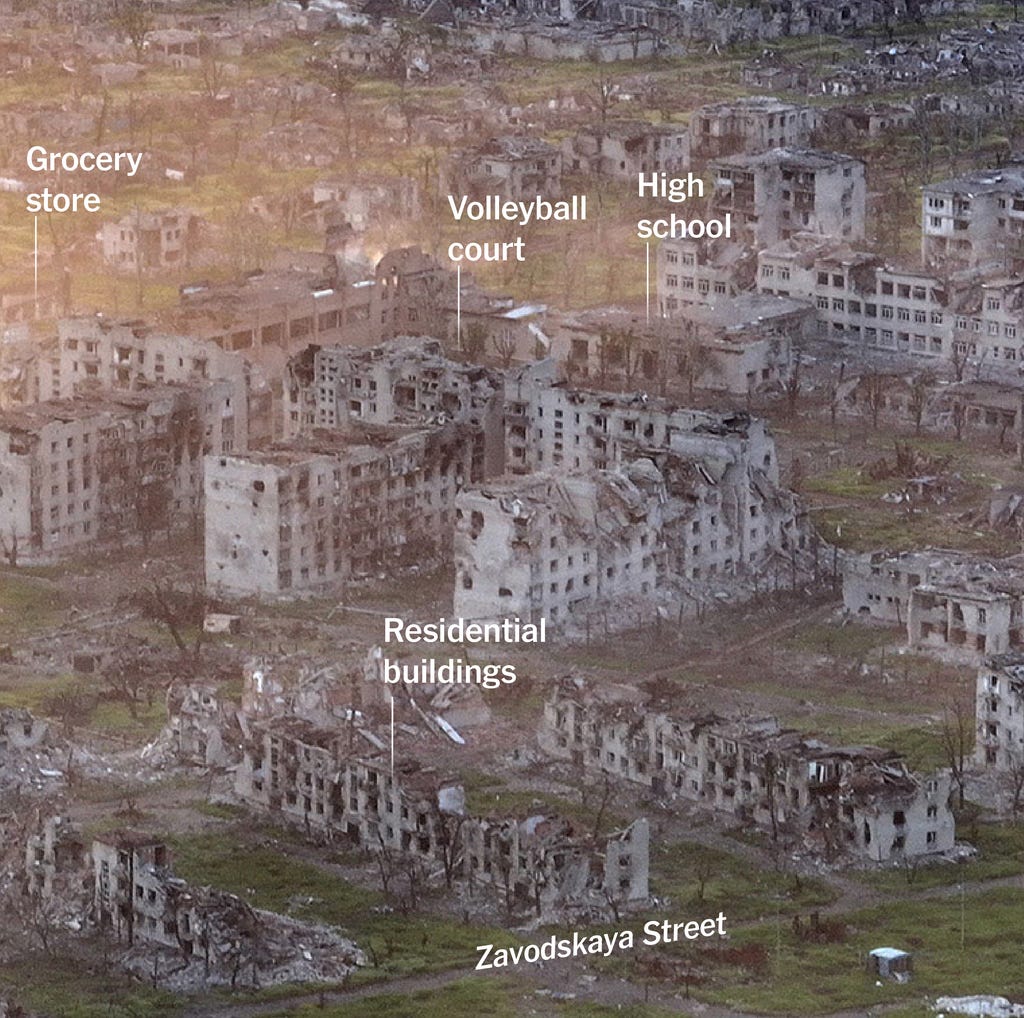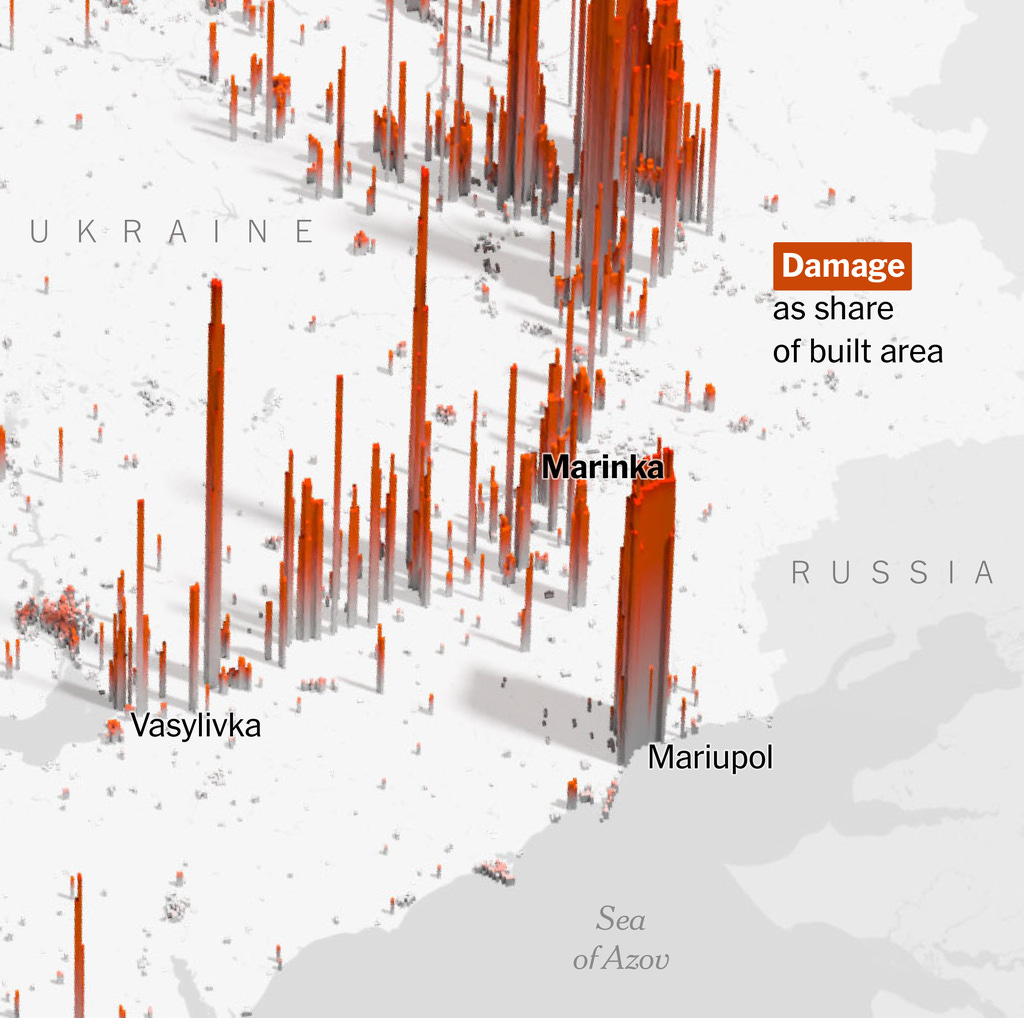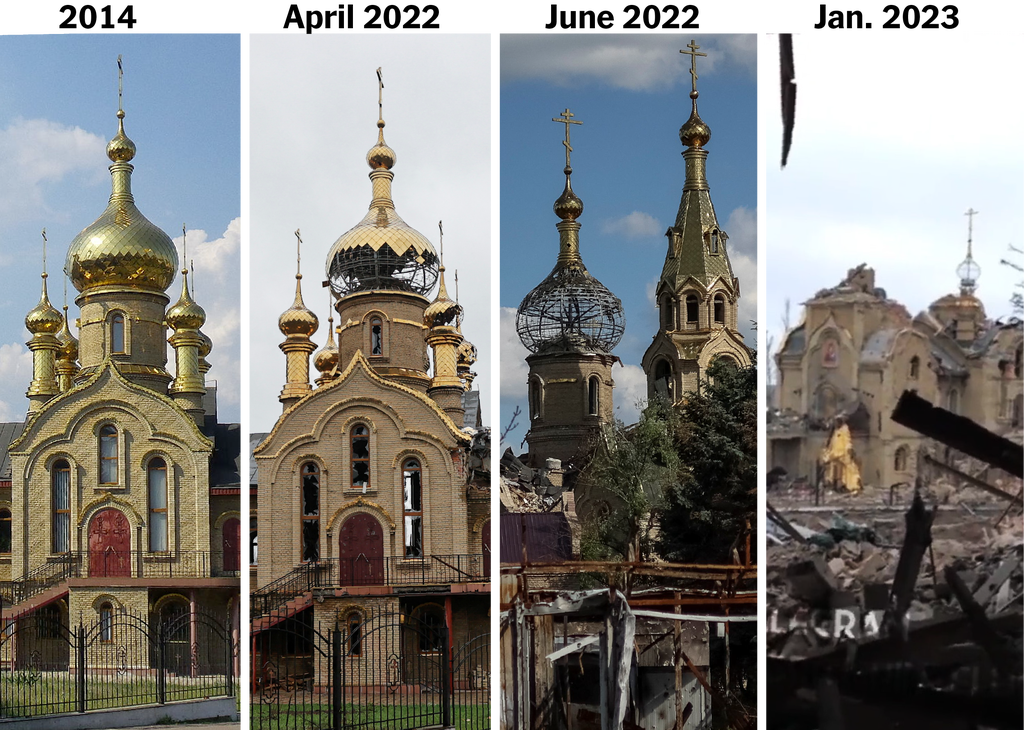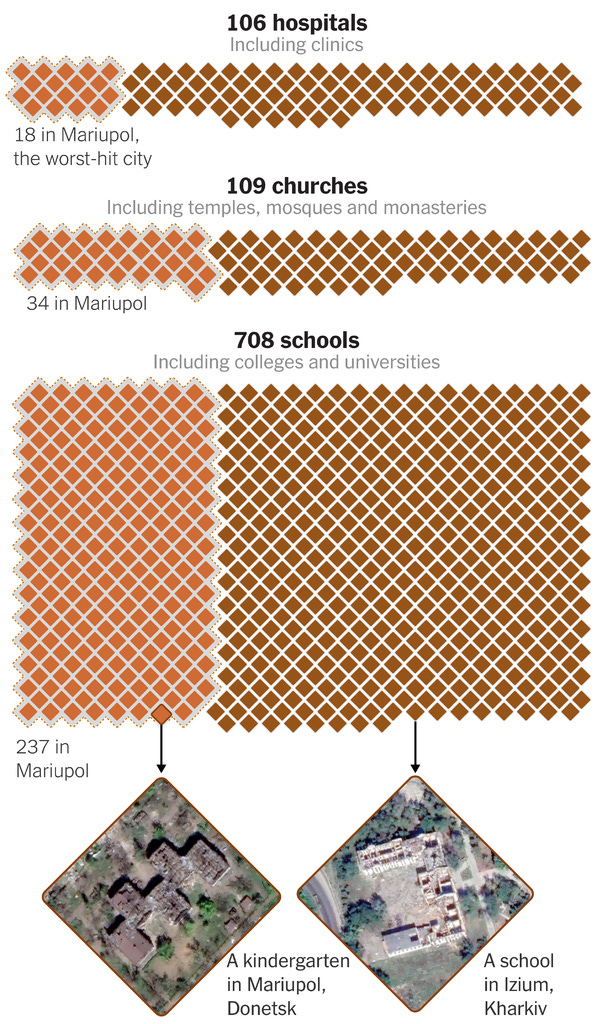There’s a bitter logic to long wars. Briefly, it’s the idea that one must keep fighting, no matter how dear the cost, because you’ve already lost so much. Something like this is happening in Ukraine. So much territory captured, so many lives lost, but the fight must go on to recapture that territory and to honor the already dead, tragically by creating even more dead.
This thought came to me as I read The New York Times report this morning on Ukraine’s losses in the war. Accompanying that report were two articles on Ukraine’s shortage of troops (and the unsurprising difficulty of conscripting new infantry for what is largely an attritional war) and the Biden administration’s approval of Ukrainian strikes into Russia itself (but not “deep” into Russia, not yet, anyway).
As usual, a negotiated settlement seems to be off the table, though Putin appears to have floated the idea of ending the war. But Putin must not be allowed to keep his ill-gotten gains else he’ll be emboldened to invade NATO countries, so the theory goes. That means, of course, the war will go on, at odds that grow ever longer for the Ukrainian people.
Here’s the story from The New York Times today:
Measuring what Ukraine lost
Graphics by Marco Hernandez
Imagine your hometown being wiped off the map.
Imagine a city where no one lives.
Imagine the landmarks in your life — where you went to school, where you were married, where you worked and played and loved and prayed — erased.
This is what happened to Marinka, a small town in Ukraine’s east with nearly 200 years of history. Photos of it look like those of Hiroshima. Its destruction has become a symbol of Ukraine’s war.
Destroyed buildings in Zavodskaya Street in Marinka. Photo by Finbarr O’Reilly for The New York Times
It’s hardly the only Ukrainian town like this. The Times worked with researchers to measure every town, street and building in Ukraine blown apart since the Russians invaded in 2022. In today’s newsletter, we’ll explain how we did it — and what we found.
Source: Analysis by Jamon Van Den Hoek, Corey Scher and The New York Times | By Marco Hernandez
Measuring a nation’s destruction wasn’t an easy thing to do. It was possible only by viewing Ukraine from space. Radar-equipped satellites took frequent images of the country during the war. Then, researchers from the City University of New York Graduate Center and Oregon State University analyzed years of data — more than 10,000 images of Ukraine in total — to track small changes in blocks or even discrete buildings. The project took more than a year.
More buildings have been wrecked in Ukraine than if every building in Manhattan were leveled four times over. In some places, like Marinka, not a single resident is left.
Pre-war Wikimedia via Ліонкінг; Serhii Nuzhnenko, Reuters; Gleb Garanich, Reuters; Leonid ХВ Ragozin via social media | By The New York Times
Beyond the debris, what interested us most was the impact on people. So many Ukrainians have lost not just their homes but their entire communities. Marinka represents this loss. I walked its streets while it was under siege in July 2022. Not many people still lived there; I didn’t see how any could. But I stepped into an apartment building and found, in light so dim that it was hard to see, a mom, her 13-year-old daughter and their cat sitting in a quiet, half-destroyed room. The front line between Russia and Ukraine was on their doorstep.
Finbarr O'Reilly for The New York Times
They eventually left, along with everyone else. The Russians took control of the city last year. But there wasn’t much left. As one soldier put it, “Whatever could burn, burned.”
Our story, published today, visualizes the scope of Ukraine’s annihilation.
Sources: Jamon Van Den Hoek and Corey Scher (InSar data); OpenStreetMap (building street maps); Maxar Technologies via Google (satellite images from June 2023) | By Marco Hernandez
For more
Can Ukraine find new soldiers without decimating a whole generation?
Volodymyr Zelensky has pressed the Biden administration to let Ukraine strike deep inside Russia with American-made weapons. So far, the White House has refused.










Glad to see the NYT willing to document the horrors of war in the Ukraine, but will be even better if they could spare a glance at the horrors done in Gaza and document as fully what has happened there. Will wait....without much hope. And yes to your comments Bill about the war continuing since so much has been lost and therefore it must continue. The words from the Irish ballad "The wind that shakes the barley" come to mind at this point: ....."and blood for blood without remorse". Once blood is shed, so damn difficult for the words of peace to be heard once more. Thank you for the post!
What you are describing is the sunk cost fallacy. That one has to continue investing in something, particularly something destructive, because one has already sacrificed so much. There's only one way out of the hole and that's, first, to stop digging.